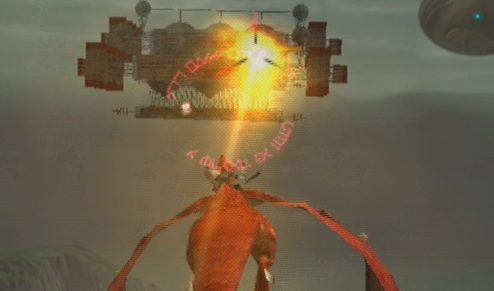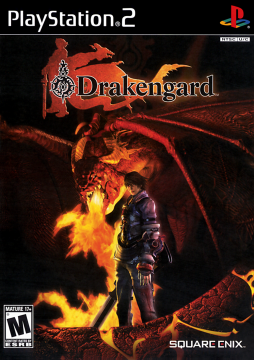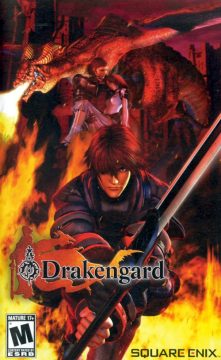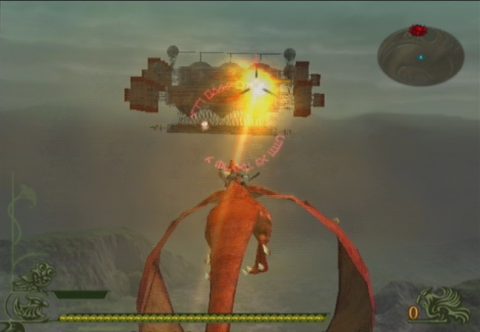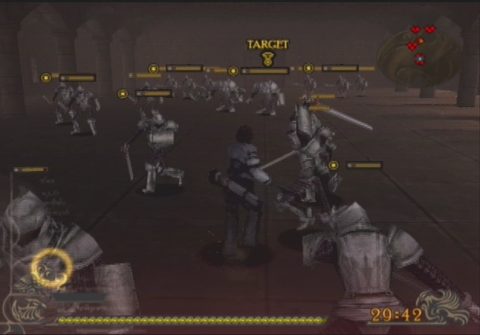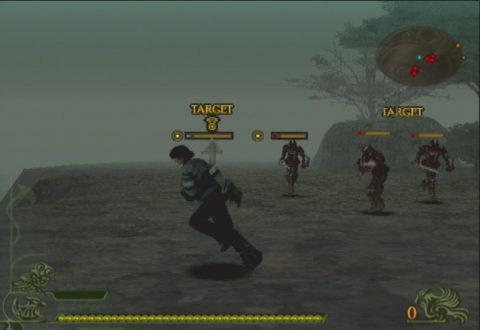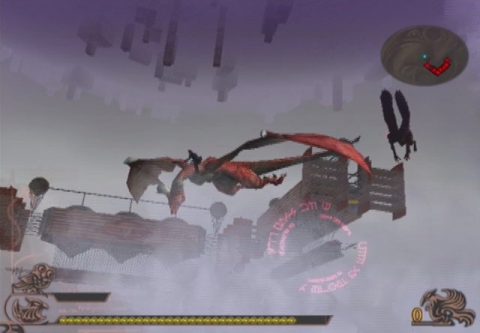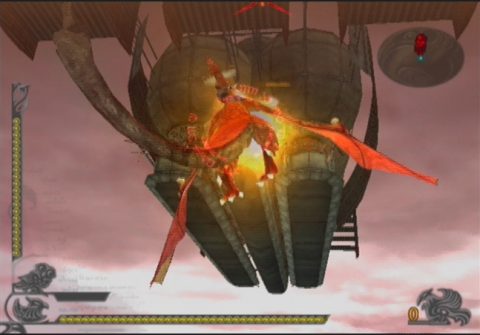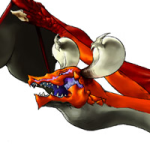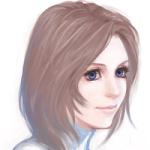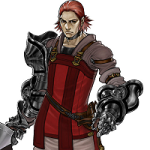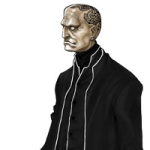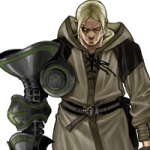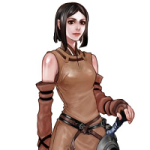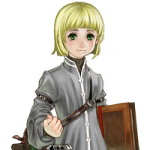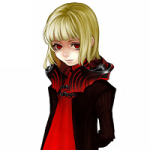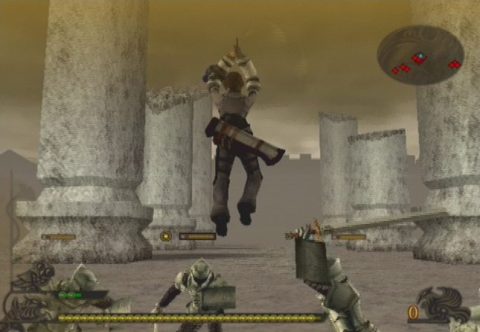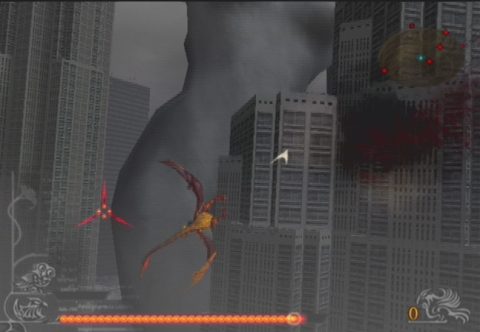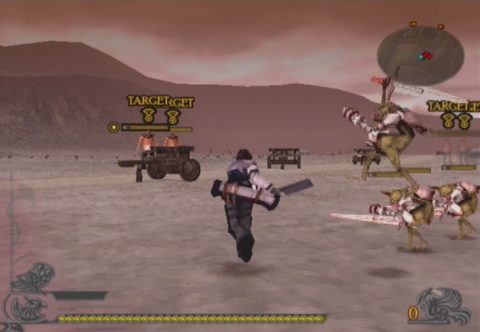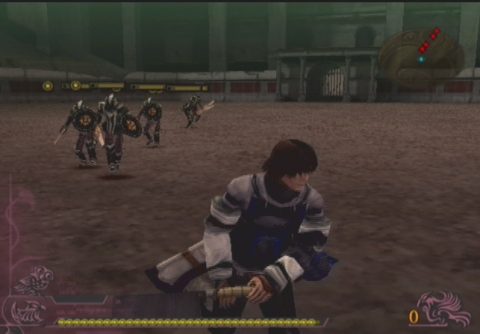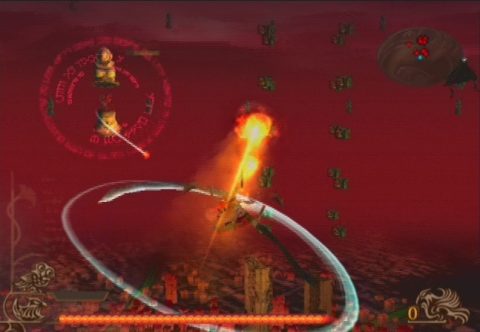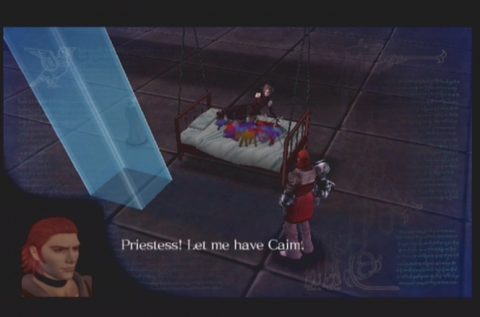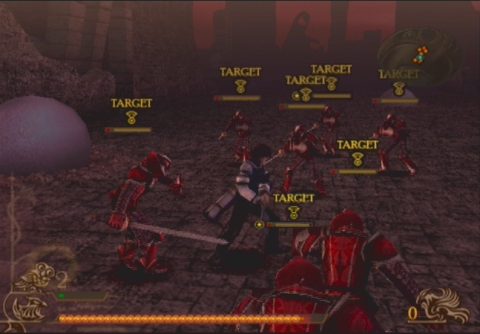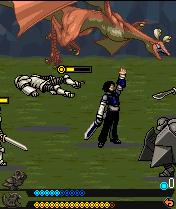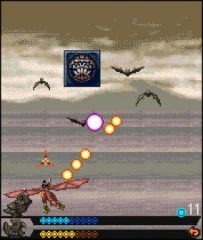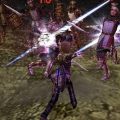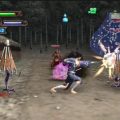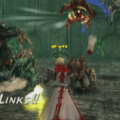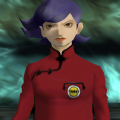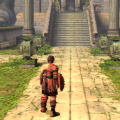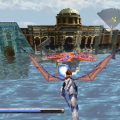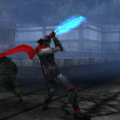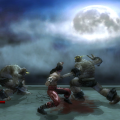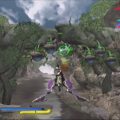- Drakengard
- Drakengard 2
- Drakengard 3
Ever since the days of Double Dragon and Final Fight, beat-em ups have been evolving and adapting to modern gaming conventions. But almost since their inception, the genre ups have been reinventing themselves from as early as the late 80s with games like River City Ransom, which introduced common RPG elements to a genre on the complete opposite end of the gaming spectrum. Even today with games that have garnered major critical acclaim like Devil May Cry, Ninja Gaiden, and God of War, which are essentially just glorified entries of the arcade-born genre, beat-em ups still show their clout as an evolving entity. One of these branches is the “musou” subgenre, popularized by Koei and named after the Japanese title of the Dynasty Warriors series, known as Shin Sangoku Musou. One game in particular that has been cast aside in favor of its hype-driven cousins is cavia’s Drakengard, which defies almost all common knowledge of what a beat-em up should be.
Drakengard was only the second game developed by cavia, a small company that definitely seems to have an appreciation of oldschool, arcade-style gaming. Drakengard‘s development began at around the same time cavia was developing Capcom’s light-gun shooter, Resident Evil: Dead Aim. The game was originally set to be released by Enix, but the Square Enix merger occurred in April of that year, and thus, Drag-On-Dragoon was Square Enix’s first published title, giving it some kind of sensational expectations as the new company’s first game.
Drakengard is unique to the beat-em up genre in many ways. First, its theme and presentation. The game is a lot more story-heavy than every other similar game out there, and the story of Drakengard is surprisingly more original and refreshing than most of Square Enix’s RPGs. Caim, the hero of Drakengard, at first seems like your average, anonymous badass out for bloody vengeance (in this case, for the death of his parents in the jaws of an imperial black dragon), the quintessential star of every modern beat’em up. But Caim is a much darker, deeper character with a much more intriguing tale than what is at first presented.
Caim is a soldier fighting for the Union army, which is currently engaged in a war with an empire of zombie-like humanoid creatures who take their orders from entities known as the “Watchers”. The Watchers are determined to get their hands on a young girl selected to be the Goddess of the Seal, Furiae, who just so happens to be Caim’s sister. It is not known exactly why the Watchers want her, but one thing the Union does know is that if anything were to happen to the Goddess, disaster would fall upon the world.
Caim fights the empire to protect his sister, but his hatred for the empire due to the death of his parents drives him into a furious bloodlust. He dives headlong into battles with hordes of imperial troops with no concern for his well-being, determined to kill every man, woman and child that associates themselves with the empire with sickening, almost villainous glee expressed in his face, making him unlike any most “heroes” in other video games . However, due to his recklessness, Caim is mortally wounded during the first battle of the game. As he stumbles through the battlefield on the verge of death, he comes across the creature he hates the most: a dragon. The dragon, tortured and mutilated by the sadistic empire, is also on the verge of death. Thus, the two, in spite of their hatred for one another, form a pact in which Caim must sacrifice his ability to speak, but will spare both of them from certain death.
The story of Drakengard is extremely dark and macabre, much more than most Japanese games. It was the first game written and directed by Yoko Taro, who later became more well known for the Nier games, another series that takes some interesting narrative risks and which is a sort of follow-up to Drakengard. The presentation and delivery is much more like that of a survival horror like Resident Evil or Silent Hill, but what Drakengard lacks in scares and thrills it makes up for with disturbing imagery and surprising plot developments which are made all the more pleasing by some exceptional writing and extremely well-delivered dialog. The story also deals with a lot of taboo themes, such as incest, child abuse, pedophilia, sadism and cannibalism. The plot starts off very linear, but eventually branches off into five different possible paths. But Caim will not journey through these branches alone, because Drakengard has a hearty cast of very unconventional and fascinating characters.
Characters
Caim
The “hero” of the tale. Caim is silenced early on when he forms a pact with a dragon. Pacts require a sacrifice not chosen by those entering the pact. In Caim’s case, he loses his ability to speak, being branded with a pact symbol on his tongue. Caim is a very dark character and only a hero in the most tentative of senses. Throughout the game, he does many despicable things and his bloodlust is insatiable.
Angelus
The red dragon with whom Caim forms his pact. Like all dragons, she despises humans and constantly criticizes Caim and the other humans she comes in contact with. Unlike the dragons in Panzer Dragoon, she’s a very intelligent and vocal character and has some of the deepest, most profound lines in the game. Eventually, she warms up to Caim, and they develop a strong yet reluctant friendship.
Furiae
Caim’s sister whom was his only company throughout most of his early life after their parents were killed. Caim and Furiae are extremely close, and even have an incestuous love affair that’s outright expressed in the Japanese version of the game, but only implied in the North American version. Furiae is selected as the Goddess of the Seal, and thus holds a great weight on her shoulders, a weight which seems too heavy for the ill-fated young Goddess to bare.
Inuart
Inuart is a minstrel known all over the country for his beautiful, haunting songs. A childhood friend of Caim and Furiae, he and Furiae married shortly before she became the Goddess of the Seal. Inuart is unaware of Caim and Furiae’s sexual relationship, and Caim’s jealousy and tendency to be possessive of Furiae causes his relationship with Inuart to sour, which escalates into a full-scale war between the two. Despite joining the Union, Inuart is a weakling, and is a very passive and cowardly character. However, he eventually breaks through these barriers by sacrificing his ability to sing in order to form a pact with a black dragon, the same black dragon that killed Caim and Furiae’s parents. This pact transforms him into a very threatening, but mentally unstable antagonist.
Verdelet
The Hierarch Verdelet is the spiritual leader of the Union army. However, he is not a warrior, merely a religious man and not suited for battle. To protect him, he formed a pact with a dragon long ago, but his dragon was turned to stone by the dark magic of the empire. Verdelet is a huge, annoying sissy that constantly complains about Caim’s conduct, but is too afraid to leave the party.
Leonard
Leonard watched as his brothers were murdered by the empire, but could do nothing. After a failed suicide attempt, Leonard forms a pact with a faerie (quite suiting for this wimp) at the cost of his sight. Leonard is a paladin-type character that fights with a mace. Other than that, there’s not really much else to say about Leonard. He’s the least interesting and original character in the game, and his pact partner is incredibly annoying.
Arioch
Arioch, an elf, was a happy, loving mother and wife. But her family was killed by the empire. This drove her completely insane. Forming a pact with the elemental spirits Salamander and Undine by sacrificing her womb, Arioch goes on a killing spree, obsessed with torturing and slaughtering children and consuming their flesh. In battle, she uses a grizzly, jagged, sickle-shaped sword and calls on the spirits of fire and water to destroy her enemies. A very original character. This chick is COMPLETELY gone. You have to wonder what Caim and the others are thinking, bringing this twisted, dangerous character along on their adventures.
Seere
Seere is a little boy who has lost his parents and his sister. While looking for his sister, he encounters a giant stone golem who offers to help him if they form a pact. Seere’s pact brands him all over his body, and his sacrifice is his “time”, or rather, his ability to age. Thus, Seere is trapped in the body of a child for the rest of his drastically shortened life. Seere, though young, is extremely brave. Because he knows he will not live long anyway, he has no fear of death.
Manah
Manah is Seere’s twin sister, whom disappeared somewhere in the mountains after the death of their mother. Not long after meeting Seere, he reveals to the party that their parents, who favored Seere and gave him all their love, physically and sexually abused Manah. Manah’s parents despised her so much that their mother offered her to the empire for their unholy purposes. The empire uses Manah as a medium to communicate with the Watchers. Manah’s hatred and resentment of her abusive parents allows her to be fully possessed by the evil deities, and she now directly governs the empire’s campaign of terror.
Needless to say, Drakengard‘s M for Mature rating is well-deserved. Aside from the completely twisted cast of characters is a morbid, downright macabre plot ripe with cutscenes that contain some of the most disturbing imagery you will ever see, like an army of giant, red-eyed infants that rain destruction down on the world and tear people to pieces. It’s slow to start, but once it gets going, it’s one of the most intense and original narratives you’ll ever experience. The game also has five very distinct endings, each one more messed up than the last.
It’s hard to believe that underneath Drakengard‘s glorious presentation and story is the spirit of an old school beat-em up and shooter. Drakengard plays most similarly to KOEI’s Dynasty Warriors series, inter-cut with segments of Panzer Dragoon-style, dragon-riding shooter segments.
The ground-based combat is a mixed bag of genius and mediocrity. The mediocrity lies in how melee combat is executed. It’s loose, somewhat repetitive, and not nearly as refined as Dynasty Warriors. You’re given a generic set of melee attacks that can be ended at certain points with a button switch that executes an area-clearing critical strike indicated by a gleam of light emanating from Caim’s weapon. This is somewhat similar to the setup in Dynasty Warriors, but these strikes are always the same no matter when you use them, and there are only two real variations of them (a shockwave that spreads out in all directions or a forward-shooting projectile). If you can string enough attacks together, you may be occasionally rewarded with some health or a bomb attack that’ll hit everything in your vicinity. With this one extremely limited combo string, you’re pitted against hundreds, if not thousands of enemies in every desolate battlefield, and fighting them can get very tiring after awhile.
Fortunately, to keep things interesting are the weapons themselves. Drakengard has a whopping total of 65 very different weapons, each with their own EXP levels calculated by the number of enemies you’ve killed with them. As each weapon climbs the four-level ascension, it changes in both appearance and power. Each weapon also has a unique spell, which is quite a feat considering the number of weapons there are. The spells level up along with the weapons and change in various ways. Some spells grow stronger but cost more MP, others remain the same, but last longer, etc. On top of that, each weapon has its own four-part story, with each level revealing a little more of the weapon’s history. These range from simple narratives, poems, and haikus, to very profound, almost Confucian lessons of morality.
During the ground battles, most of the time, you can call upon Angelus and she will swoop you up so that you can rain fire upon your hapless foes. But in between the ground-based stages are completely aerial stages. These are played out a lot like the ones in Panzer Dragoon, but they’re not on rails. You’re free to fly about the stages. Because it’s not on rails, you have a lot more maneuverability. Angelus can dash from side to side, forward, and make an instant, 180 degree flip. Much like in Panzer Dragoon, you can fire single shots or hold the button and target many enemies at once. Also, like Panzer Dragoon, Angelus builds up a meter as she takes and deals damage. Once this meter is full, she can unleash a devastating barrage of fireballs that’ll wipe out just about anything on screen. There’s also a few boss fights in the game, but these are extremely epic, and usually carried out while mounted on Angelus.
About the graphics, Drakengard was obviously scaled down in order to encompass the dozens and dozens of characters that appear on screen at once. Considering this, it still looks really good. Caim and his friends in particular have extremely smooth polygonal models. Not as much attention was paid to the enemies, who are quite bit rougher looking, but they’re just anonymous sword-fodder anyway. The special effects like dragon fire and spells are quite nice, although some of them bog the game down quite a bit. The environments are also very expansive and impressive. They’re usually massive and highly detailed with great textures and very moody use of lighting. Lastly, the game’s visuals are displayed through a slightly blurry, discoloring filter that gives the game a very slight aged, sickly twinge to it that’s quite befitting of the game’s atmosphere.
Even more atmospheric than the visuals, however, is the music. Drakengard has one of the most distinct soundtracks you’ll ever hear in a game, and while you may not like it, there’s no denying that it fits the game perfectly. Takayuki Aihara and Nobuyishi Sano have taken samples from orchestral pieces rich with discord and skipped and chopped them up to create something truly chaotic and disturbing. Every piece is chilling or haunting in some way.
Overall, Drakengard sums up to be a good beat’em up with fun shooting elements, with an uncharacteristically incredible presentation and one of the most refreshing stories I’ve encountered in many years. While merely looking at its core play mechanics, one can deduce that it is merely a slightly above average game, when considered with the strength of its narrative, Drakengard definitely adds up to be worth far more than the sum of its parts.
Drakengard – mobile phone (2004)
 Drakengard was also released on mobile phones in Europe. Like most mobile phone versions of games, it’s a fairly minimal effort. As in the PS2 version, there are two modes of play. Ground combat is done in 2D, side-scrolling beat-em up fashion. The sprites are actually pretty nice, but these sequences are extremely repetitive, with you guiding Caim through completely featureless areas fighting the same three types of enemies until your mind turns to jelly. The combat system is boring, with only one combo string available to Caim, and terrible hit detection that allows enemies to walk through your attacks and dogpile you. The aerial stages are very much a Space Harrier-type rail shooter deal. These are also pretty featureless and bland.
Drakengard was also released on mobile phones in Europe. Like most mobile phone versions of games, it’s a fairly minimal effort. As in the PS2 version, there are two modes of play. Ground combat is done in 2D, side-scrolling beat-em up fashion. The sprites are actually pretty nice, but these sequences are extremely repetitive, with you guiding Caim through completely featureless areas fighting the same three types of enemies until your mind turns to jelly. The combat system is boring, with only one combo string available to Caim, and terrible hit detection that allows enemies to walk through your attacks and dogpile you. The aerial stages are very much a Space Harrier-type rail shooter deal. These are also pretty featureless and bland.
The only interesting thing to note about the mobile version of Drakengard is that it provides you with hints for the PS2 game, acting as sort’ve a tie-in that interacts, though very minimally, with the console version of the game. This is actually pretty cool since it tips you off on a few things that are pretty obscure in the PS2 game. However, this also means you had to have played the mobile game before or while you’re playing the console game, as GameFAQs and the like render these hints obsolete.
